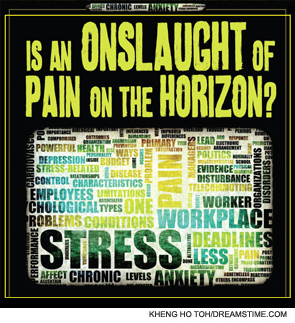
ATLANTA— Get ready for more reports of chronic pain from your patients.
That’s the message conveyed by Carmen R. Green, MD, professor of anesthesiology, obstetrics, and gynecology, and health management and policy at the University of Michigan in Ann Arbor, at the 2010 ACR/ARHP Annual Scientific Meeting. [Editor’s Note: This session was recorded and is available via ACR SessionSelect at www.rheumatology.org.]
Dr. Green and David A. Williams, MD, professor of anesthesiology, medicine, psychiatry, and radiology at the University of Michigan, addressed socioeconomic, racial, and other disparities as they relate to the treatment of pain and healthcare in general.
Rheumatologists—and physicians in general—will treat chronic pain more often in the coming years due to both an aging and increasingly diverse population, Dr. Green said, because chronic pain seems to be more common in older and minority patients. “Baby boomers are not going to walk around living with their pain,” she said.
Dr. Green shared statistics regarding life expectancy (an average of 80 years for white women and 74.9 years for black women, and 74.8 years and 68.2 years for white and black men, respectively) but pointed out that the differences in the life expectancy of blacks versus whites can relate to the healthcare they receive.
Another factor in the pain treatment environment is the large difference between the way that patients of different races and genders receive pain treatment, as demonstrated by historical data, medical research, and patient anecdotes, she said.
Dr. Green also cited the results of a landmark study on racial disparities in healthcare called “The effect of race and sex on physicians’ recommendations for cardiac catheterization,” published in the New England Journal of Medicine.1 The study had actors in video interviews who portrayed patients with certain symptoms. More than 700 physicians viewed the interviews and received other data about the “patients.” Researchers assessed the effects of the race and sex of patients on the physicians’ treatment recommendations and controlled for physicians’ assessment of coronary artery disease possibility, patient age, level of coronary risk, and chest pain type. The study found that physicians gave a lower estimate of probability of coronary disease for women, younger patients, and patients with nonanginal pain. They also found that women and blacks were less likely to be referred for cardiac catheterization compared with men and whites. Black women were significantly less likely to be referred for catheterization compared with white men, according to the study.
The study’s results were so disparate that the U.S. Surgeon General at the time of the release of the study was prompted to explain the differences in care, although a true answer could not be given, Dr. Green said.
Both women and minority groups tend to experience chronic pain more often than other patient groups. Minorities report more pain, less access to pain management … and are at risk for undertreatment.
—Carmen R. Green, MD
A number of government- and organizational-based studies also found differences in pain treatment. The Institute of Medicine’s reports, “Unequal Treatment” and “To Err Is Human,” both find disparities in pain care, Dr. Green said.2,3 “Sadly, many patients fail to receive state-of-the-art pain relief,” she said, quoting a line from “Crossing the Quality Chasm,” another Institute of Medicine report.4 At the same time, healthcare expenses related to pain continue to be higher than those for cancer and diabetes combined, Dr. Green said.
Both women and minority groups tend to experience chronic pain more often than other patient groups, Dr. Green explained. “Minorities report more pain, less access to pain management … and are at risk for undertreatment,” she said. She shared some quotes from patients who were seeking pain treatment but never felt they received what they needed, such as the following from a female patient:
“I see my primary care physician every three months, and each time I was there he’d ask me why I am walking with a cane. I’d tell him it’s because of the pain in my back, that the arthritis pain kept getting worse, and Tylenol and physical therapy didn’t help me. I’d talk to other patients with arthritis who were taking opioids, but all I could get was Tylenol, and I knew there had to be something better.”
Sometimes the barriers to pain treatment are based on one’s neighborhood. Dr. Green cited data based on a zip-code study of certain neighborhoods in Michigan that found that those living in a mostly white neighborhood had a 90% chance of obtaining opioids at their local pharmacy compared with a 50% chance for those living in a mostly minority community.
Dr. Green said that future research should address whether or not disparities in pain treatment should actually be considered medical errors. “People go to the emergency room every day with high pain scores, and yet we send them out not really believing them. Is that a medical error?” she asked. She believes that the healthcare field in general and those who treat pain should focus more on access, assessment, treatment, and pain care.
Disparities Based on Location
Dr. Williams focused on pain treatment disparities for patients in rural settings.
About 30% of the U.S. population experiences chronic pain, Dr. Williams said. However, “Optimal care is rarely administered in routine care, particularly in rural settings,” he said. Although 75% of the U.S. population lives in urban areas, this still leaves 25% of the population in rural areas, where there are often disparities in pain care.
“Access to trained practitioners is sometimes limited or not found in rural settings. There’s a burden to travel, and there are perceived costs associated with care,” he said.
Additionally, patients in rural areas are more likely to be older, economically challenged, and have overall poorer health, and are less likely to have Medicaid or employer health insurance. At the same time, there are fewer physicians in these areas and fewer still that are trained in behavioral or exercise interventions that are becoming more important in chronic pain treatment, Dr. Williams said.
There is also a trend to view chronic pain not based on the body region where the pain occurs but more as a mechanism that could be placed in one of three categories: peripheral damage or inflammation, such as with rheumatoid arthritis or osteoarthritis; neuropathic, such as lower back pain; and central nonneuropathic noninflammatory pain, such as fibromyalgia, irritable bowel syndrome, or interstitial cystitis. However, this kind of approach is still slowly spreading from tertiary care in urban areas to rural settings, Dr. Williams said.
Because the new approach to pain is slowly changing, inappropriate pain treatment continues, including prescribing opioids or nonsteroidal antiinflammatory drugs for fibromyalgia patients, despite the lack of evidence that those medications will help this patient group, Dr. Williams said.
Treating Fibromyalgia Pain in a Rural Area
Dr. Williams reported on the results of a study he led regarding pain management for patients with fibromyalgia in a rural Midwestern area. Since the ACR meeting, those results have been published in the December issue of Pain.5 Based on the findings that nonpharmacological approaches such as educational programs, exercise, and cognitive behavioral therapy can help fibromyalgia patients, Dr. Williams and fellow researchers worked with a tertiary setting in Sioux Falls, S.D., that has 54 clinics in a rural area spreading over 500 miles. Patients in the study were randomized to receive standard care (n=59) or standard care plus a Web-based intervention (n=59), which provided access to a website called “Living Well with Fibromyalgia.” The website included various evidence-based, user-friendly modules for patients to learn about how to exercise properly, how to use relaxation responses, pleasant activity scheduling, and lifestyle changes. Researchers followed the patients over time and completed their final analysis after a six-month period. Participants were primarily female with an average age of 50, predominantly white, and had a 10-year duration of fibromyalgia.
The goal was for participants to reach a 30% improvement in pain. “For individuals who were using the website, about 30% achieved an improvement in pain versus 8% in the standard care group. Thirty-one percent of those who used the website were able to improve their functional status, while only 6% of the standard care group did the same,” Dr. Williams said.
Although there were no statistically significant changes in the study’s secondary measures (fatigue, sleep, anxiety, and depressive symptoms) from using the website, patients did note that learning about exercise and relaxation were particularly helpful. Nearly 80% of those who had used the website felt their pain intervention measures actually helped, compared with 44% of those who did not have access to the Web component.
“A therapist-less, no-contact Web intervention helped reduce pain and improve physical function compared to standard care,” Dr. Williams said. “A Web-based intervention is easily offered in the context of specialty care to supplement pharmacological interventions.”
The modules used in Dr. William’s study are now available at www.KnowFibro.com.
Vanessa Caceres is a freelance medical writer in Bradenton, Fla.
References
- Schulman KA, Berlin JA, Harless W, et al. The effect of race and sex on physicians’ recommendations for cardiac catheterization. New Engl J Med. 1999;340:618-626.
- Smedley BD, Stith AY, Nelson AR, Eds. Unequal Treatment: Confronting Racial and Ethnic Disparities in Health Care. Washington, D.C.: National Academy Press; 2003.
- Corrigan J, Kohn L, Donaldson M, Eds. To Err is Human: Building a Safer Health System. Washington, D.C.: National Academy Press; 1999.
- Committee on Quality of Health Care in America, Institute of Medicine. Crossing the Quality Chasm: A New Health System for the 21st Century. Washington, D.C.: National Academy Press; 2001. p. 50.
- Williams DA, Kuper D, Segar M, Mohan N, Sheth M, Clauw DJ. Internet-enhanced management of fibromyalgia: A randomized controlled trial. Pain. 2010;151:694-702.

